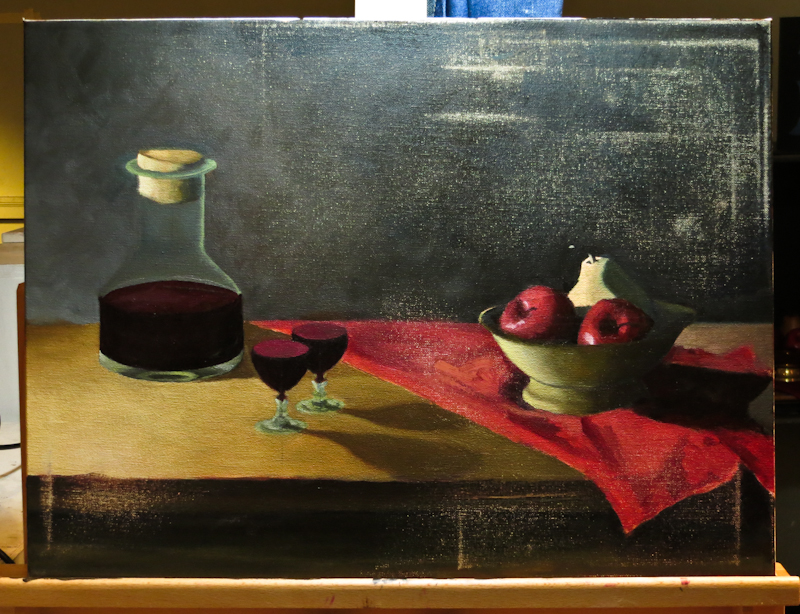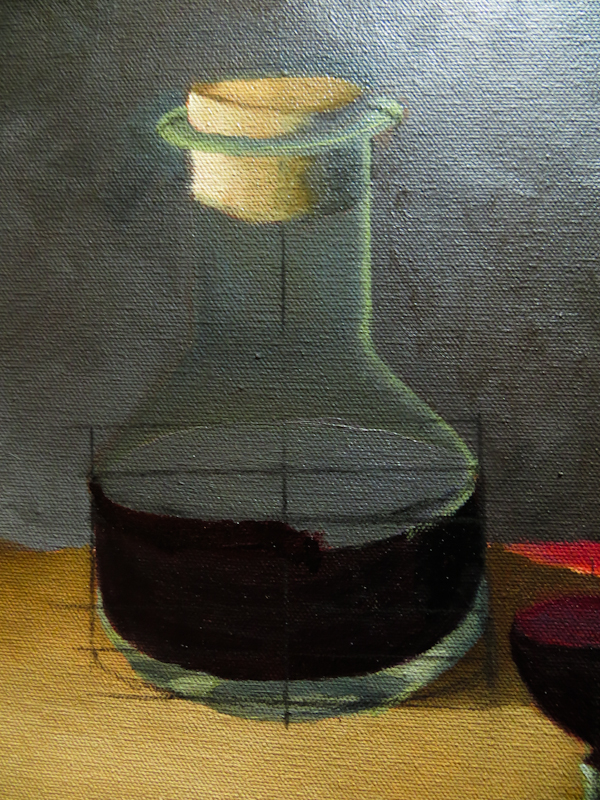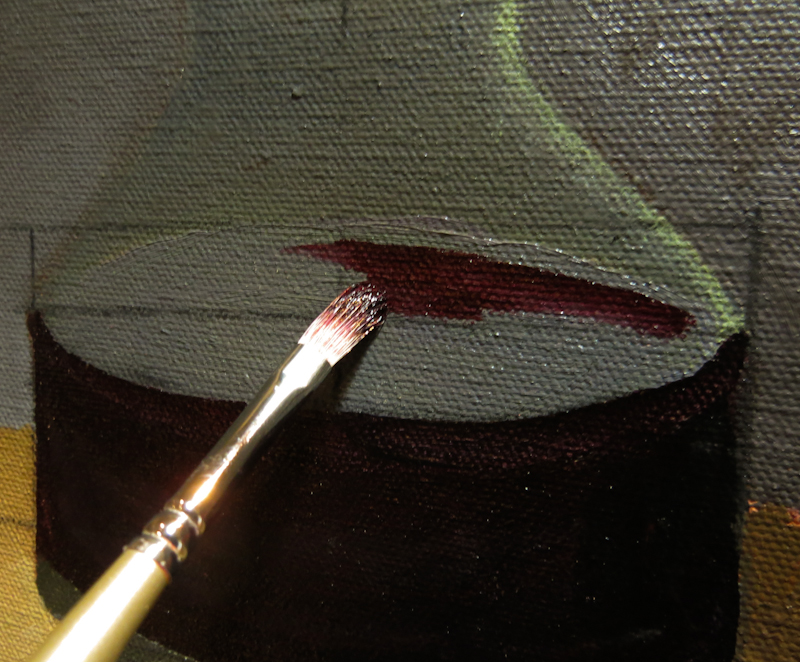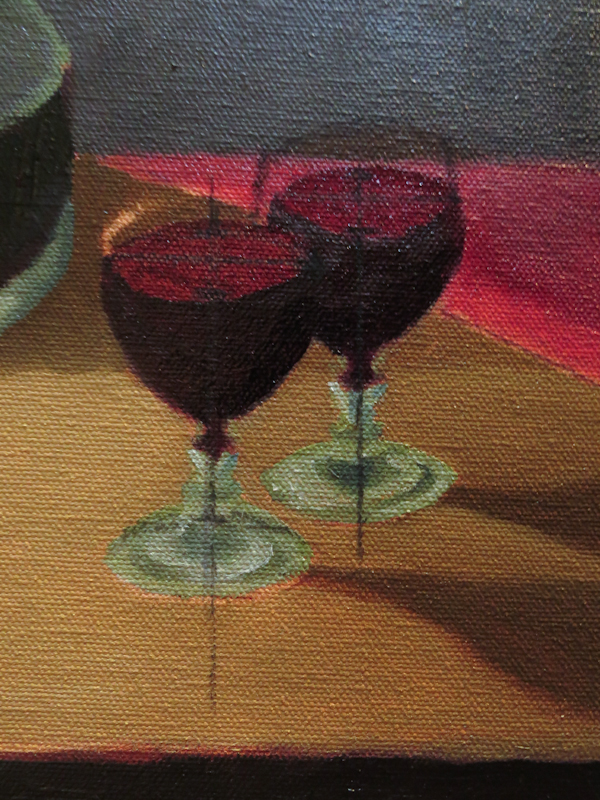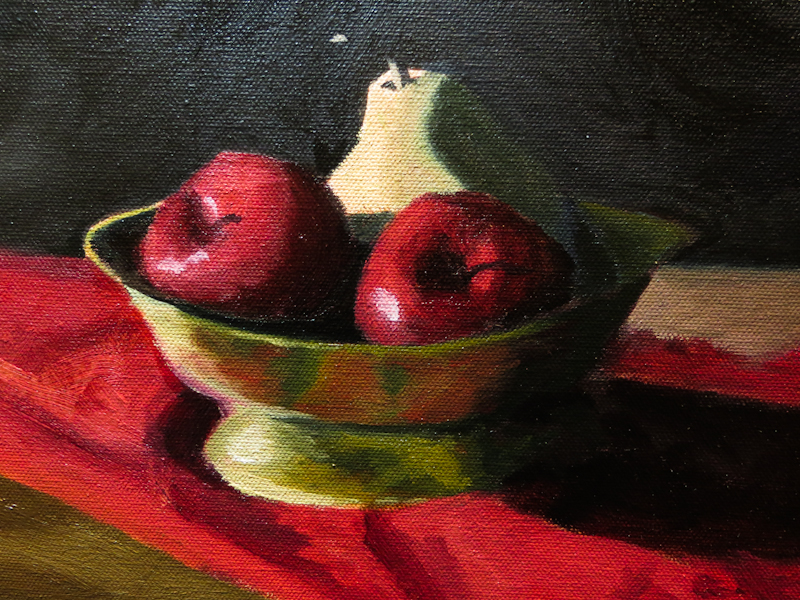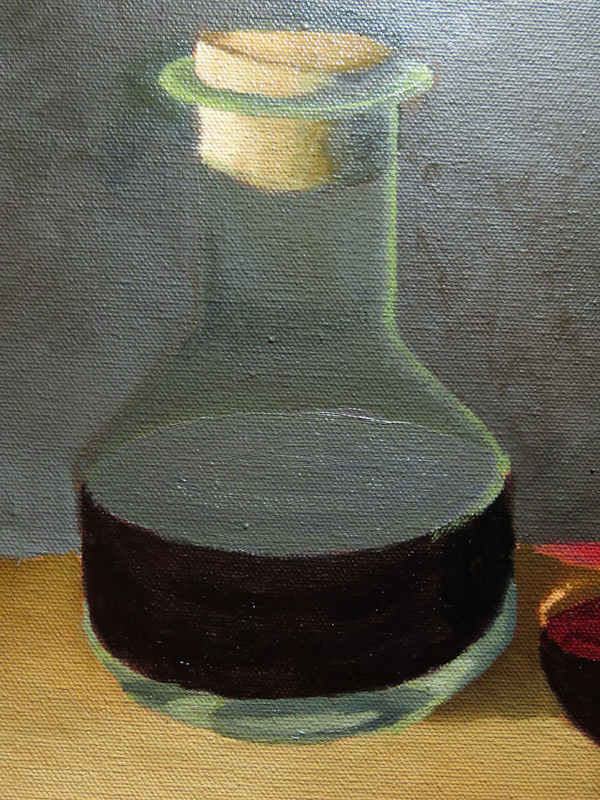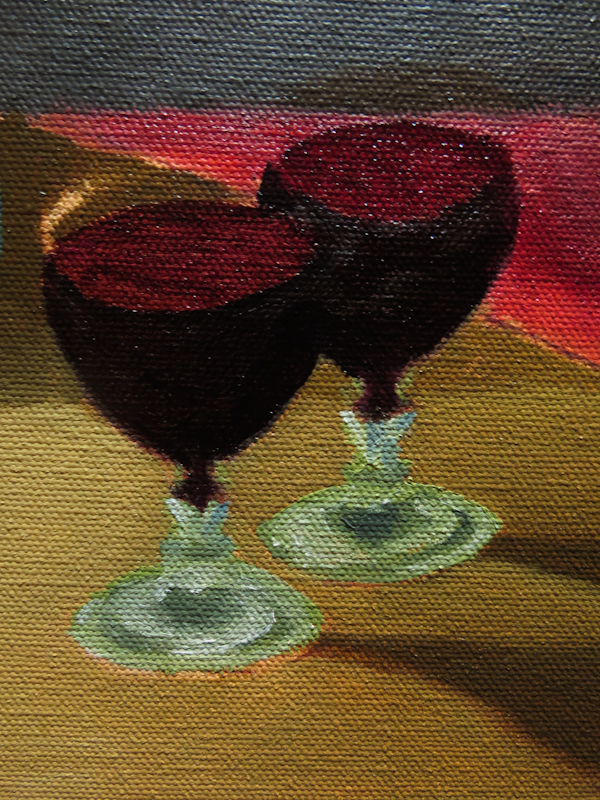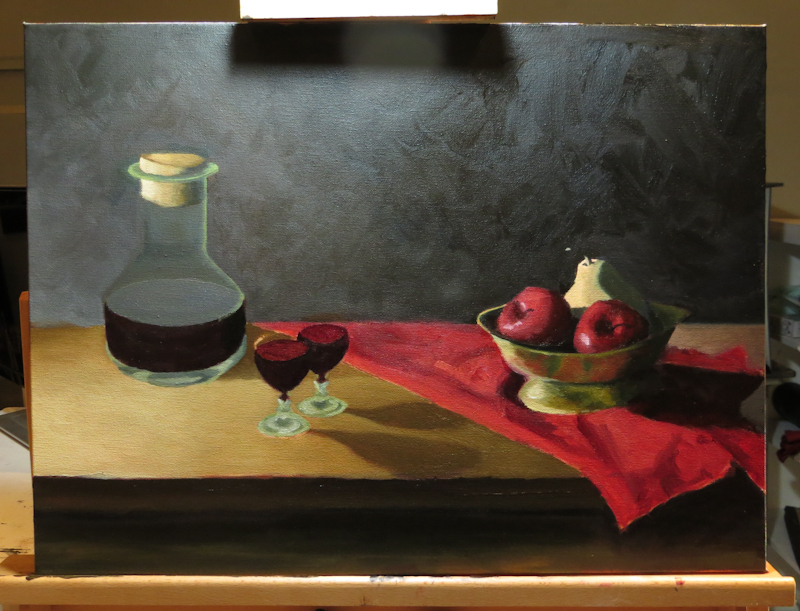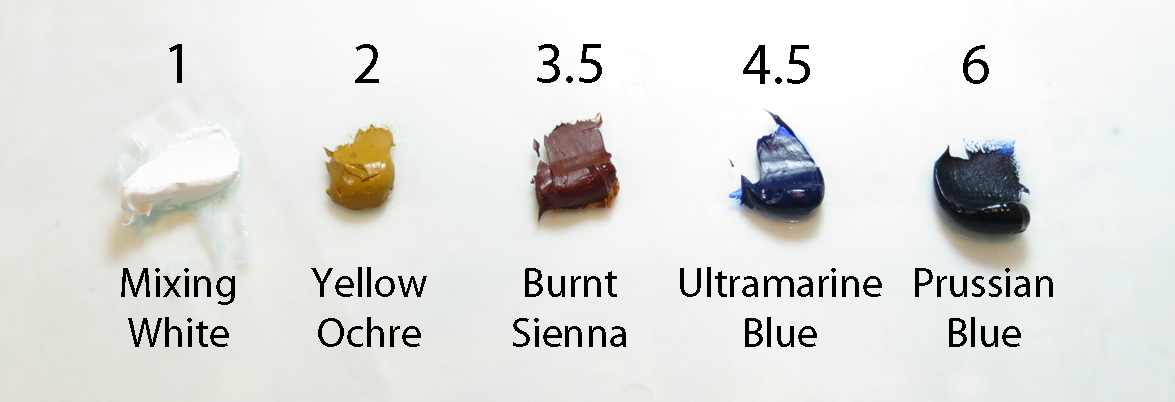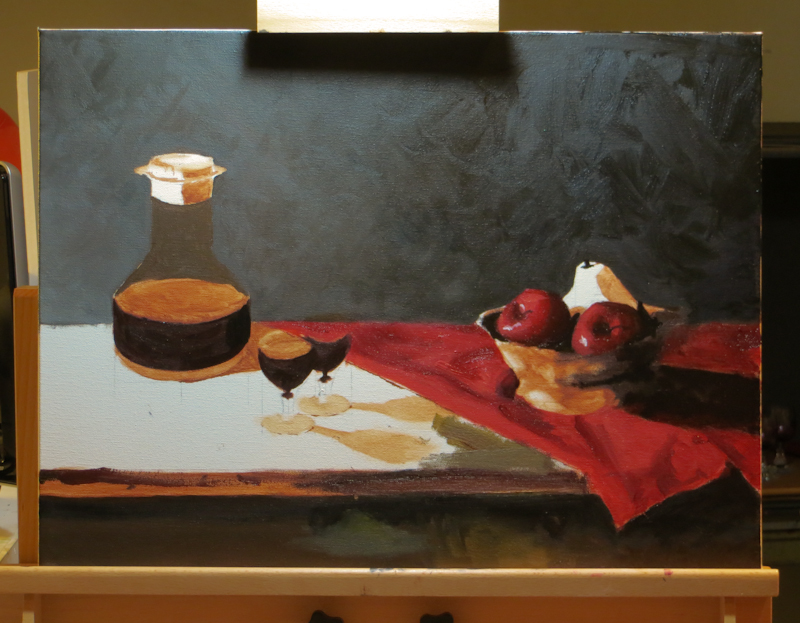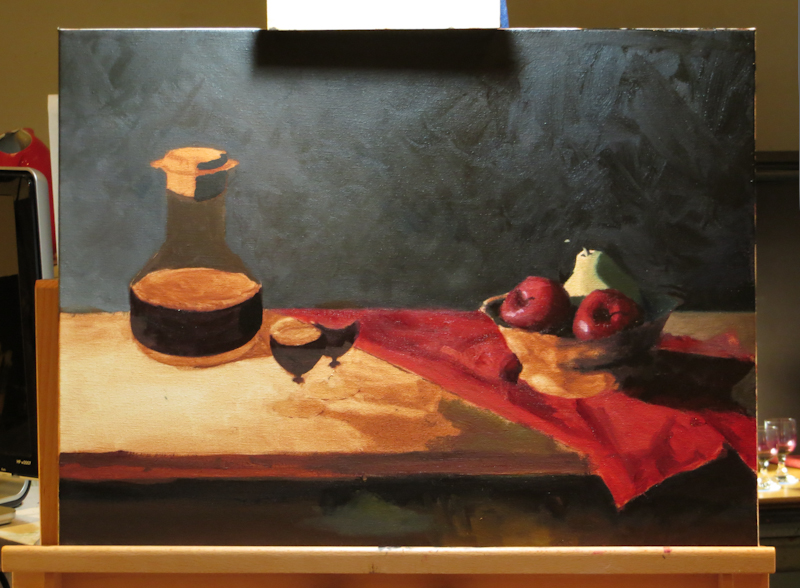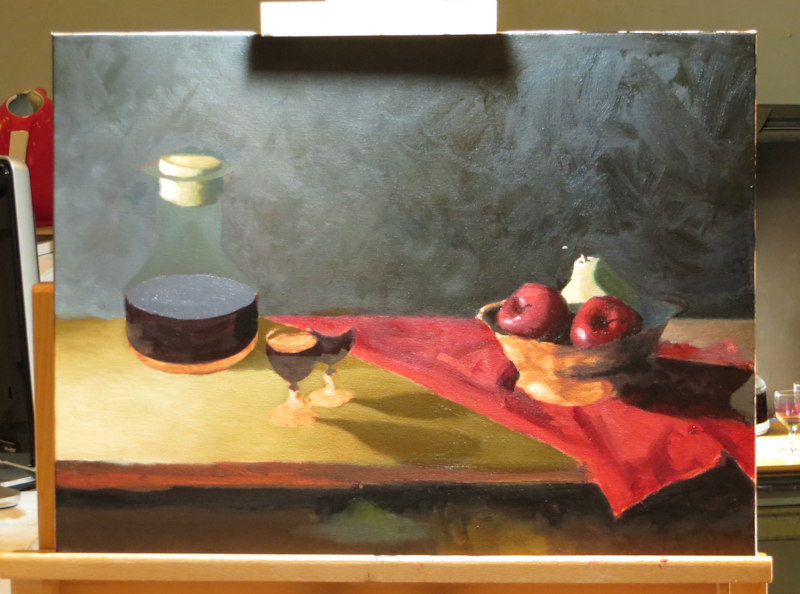Had my second weekly critique today. Gary used the time to demonstrate how to choose the right values for each part of the painting. He says the hardest values to nail are the mid-tones, but it is these values that make or break a painting. The reason mid-tones are hard is that the artist actually has a choice. The lightest lights and darkest darks are easy to place because there is no choice – the limited range of values available in paint forces the darkest shadows to black while reserving white for specular highlights.
I like to think of the process as putting together a jigsaw puzzle. With a puzzle, you start with the corners then move to the edges and then the center, always moving from the known towards the unknown, always triangulating from multiple directions. In a painting, you start with the obvious known values which are the darkest shadows and brightest highlights. Once these are placed, you can work up out of the shadows and down from the highlights until the mid-tones are boxed in. At this point, the choice of suitable values is smaller and more manageable.
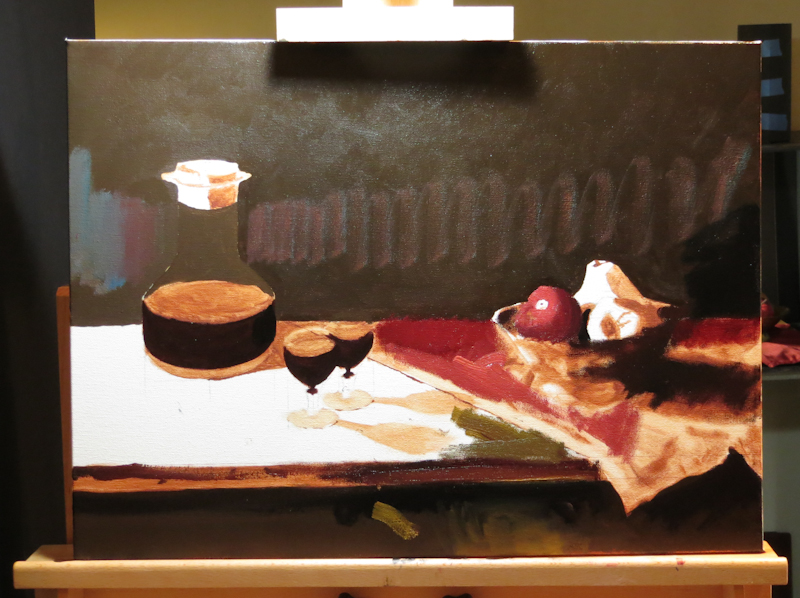
Gary has painted a number of suggestions directly on my painting: (1) the horizontal gradient in the background should start at a much lighter value on the left and go to jet black on the right; (2) the right side of the table near the red cloth will need to go very dark; (3) the wine and the shadows on the fruit and the right side of the bowl need to go almost to black; (4) the front edge of the table needs to be pretty dark.
If you look at the image above, you can see some of Gary’s suggestions, painted directly on my canvas. I find it fascinating that the background should go from a fairly light, chalky gray on the left to jet black on the right. It is also amazing that the portion of the table top adjacent to the red cloth will be a fairly dark, olive drab. If Gary has these colors spot on – and I suspect he does – they will illustrate how hard it is to nail the mid-tones without the context of the adjacent lights and darks.
Here’s the gradient, roughed in to Gary’s specifications. It actually looks pretty good and nothing like what I would have imagined from looking at the first picture.
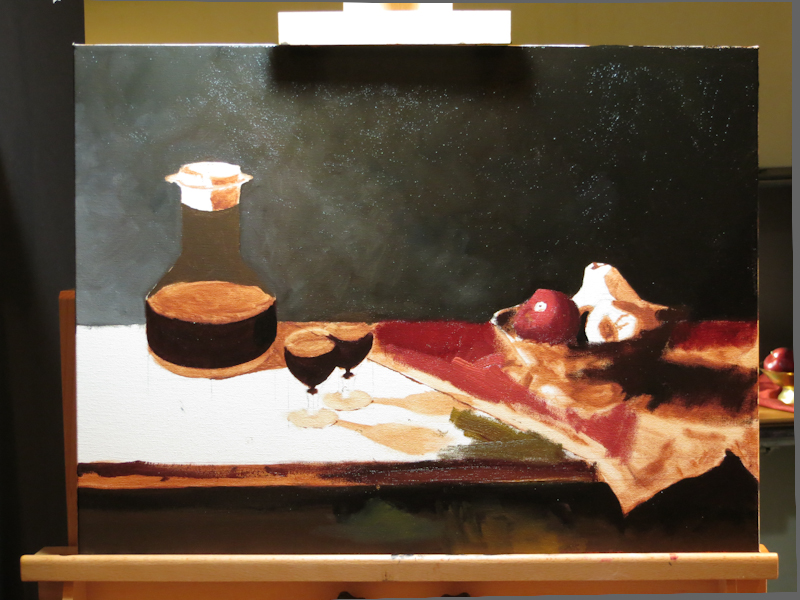
At this point, I have put in a more dramatic gradient behind the tableau.




